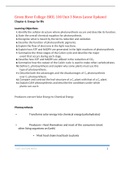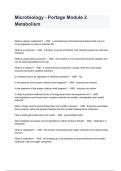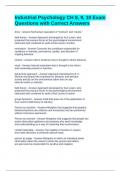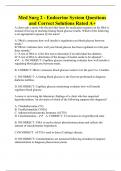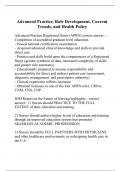Exam (elaborations)
Chem 301 Study questions for Unit 6 -10 GRADED A 2024 Athabasca University
- Course
- Institution
1. For metabolism in multicellular organisms to proceed efficiently, it is important that the final products be gases, water, or both. Why? To maintain metabolism in a steady state, there must be no possibility of a build–up of final products. The easiest disposal products are the multicellula...
[Show more]





